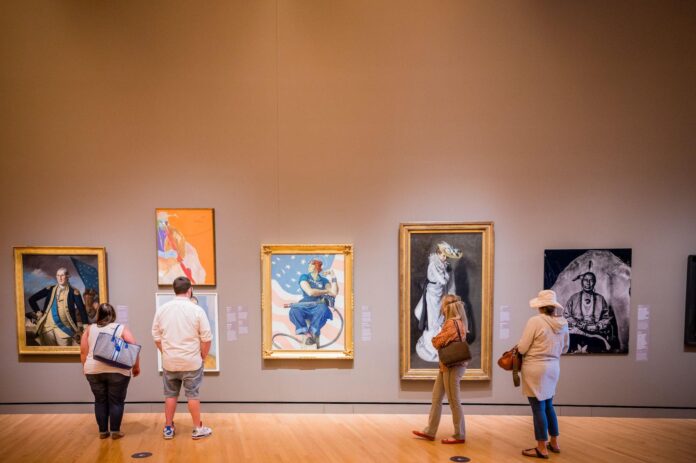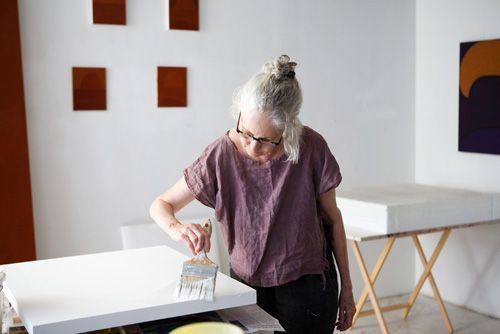Three years on from the height of the Covid-19 pandemic, which brought systemic issues in US museums into sharp relief, how much has really changed in the museum field is up for debate. While institutions have pledged to do better, including embedding DEIA (diversity, equity, inclusion and accessibility) into their culture, these efforts can seem performative. Museum workers are increasingly forming unions to fight for better labour conditions, and diversifying staff has been a “slow and uneven” process, according to a recent Mellon Foundation survey, with institutions continuing to face low retention rates. Furthermore, the Burns Halperin Report 2022 found that US museums rely heavily on donors to shape their collections, which has curbed progress in diversifying collections.
A new initiative from the Crystal Bridges Museum of American Art in Bentonville, Arkansas, hopes to help art museums fully commit to their new missions by conducting research that specifically “aims to spur innovation”. Named Remuseum, the organisation will evaluate how much museums are spending on the public compared to how much they are spending on objects, with the goal of encouraging institutions to reallocate resources in ways that are more consistent with their missions. In targeting financial sustainability, it hopes to direct institutions’ investments in more human-focused issues, from DEIA to climate change.
“Most museums have mission statements that are all about changing lives, serving and engaging the public with art, but the incentives, resources and policies tend to be still very heavily weighted to the older missions and the object-based legacy,” says Stephen Reily, Remuseum’s founding director and former director of the Speed Art Museum in Louisville, Kentucky. “If they break themselves from some of those old habits, are they willing to invest as much money in the public as they are objects?”

Remuseum’s founding director Stephen Reily Photo: Ryan Armbrust – Sniper Photo
Established and funded by entrepreneur David Booth, Remuseum has additional support from the Ford Foundation to conduct its work over three years. It will form an advisory committee, to be announced later this year, to develop creative solutions that address what Reily calls “a completely unsustainable growth in their permanent collections”.
“Museums know this, they can’t just keep renting more storage space for objects they’ll never show,” he says. “They should really question whether new buildings are built to serve their donors and collectors, as much as they are to fully engage their public, and they should really be questioning whether they even matter to enough people in the community that they aim to serve. And I think that some of the serious structural questions about how museums and their budgets are organised are not being challenged at the board table.”
Reily directed the Speed Art Museum for four years until 2021, deciding to depart, he announced, after achieving milestones he had set for himself when he settled into the role. During his tenure, the institution released its first racial equity report in 2020 and created free family memberships for households that receive government assistance. It also modelled an unconventional form of programming, rapidly organising an exhibition in direct response to the police killing of Breonna Taylor, guest-curated by Allison Glenn who worked with Taylor’s family.
“I’m an entrepreneur who ended up directing a museum at a time where the museum was bringing a new building to life and reinventing its relationship with our community and region,” Reily says. The work, he adds, was exciting. “But I was also sometimes frustrated or confused by the degree to which these legacy systems, the rules by which the field governs itself, sometimes made it hard to innovate.”
Reily is currently the sole full-time employee of Remuseum, which is affiliated with but independent from Crystal Bridges. He will work with the advice of the museum’s workers as well as that of a yet-to-be assembled advisory board, to consist of museum leaders, artists and trustees. The team will then identify and make publicly available metrics on museum expenses, specifically collecting institutions that are the primary museum in their communities. A measure of success at the end of three years, he says, would be if museums were “spending at least as much money on the public as they do on objects”.
“Most museums in America capture the attention and visits from only a very small percentage of their population,” he says. “I believe museums when they say and adopt missions that want to serve all people in their communities. And I think that if they worked harder and allocated their resources to matter to more people, the support might follow.”
Remuseum plans to publish its first findings by early 2024.

























